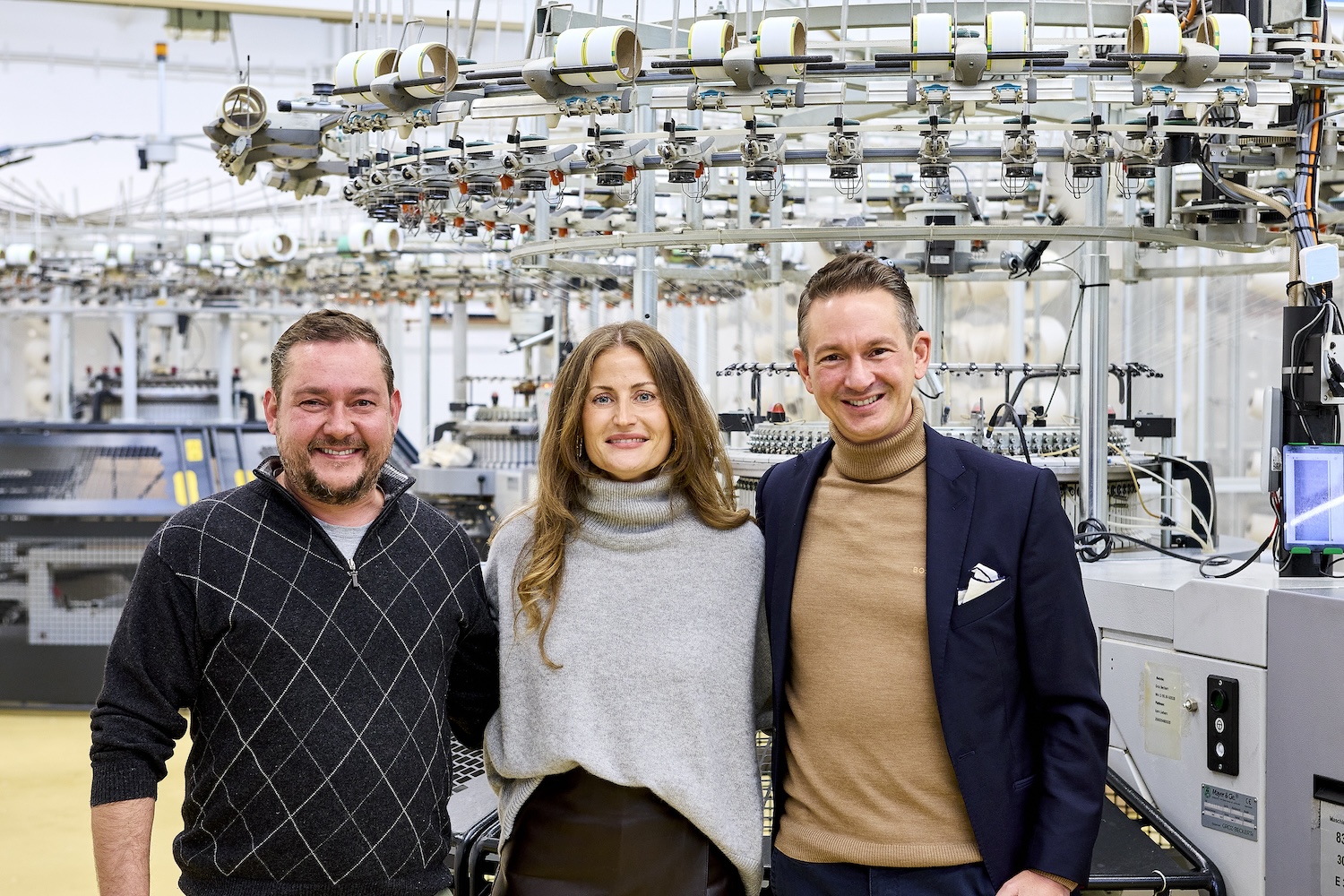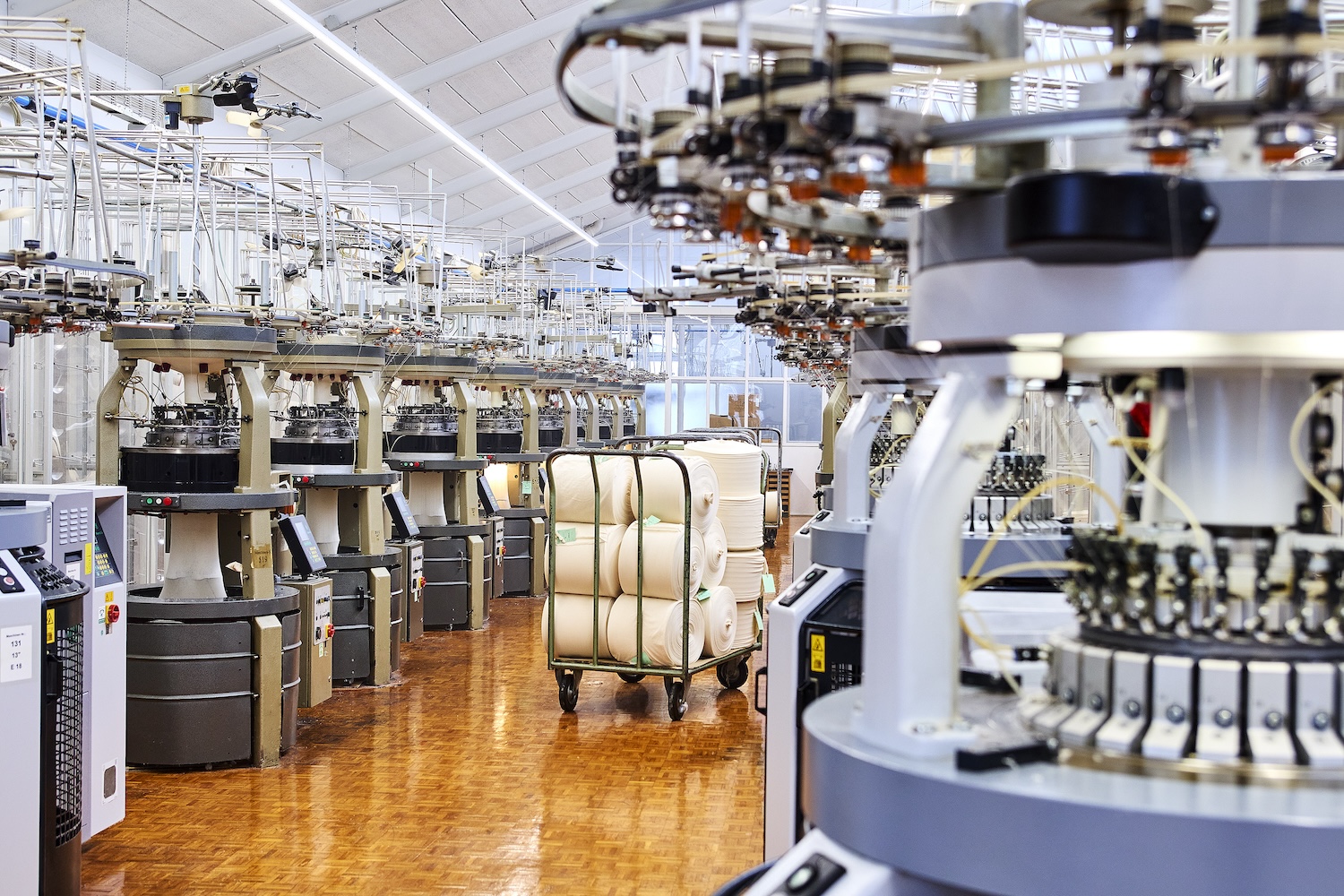
New air permeability tester from James Heal
German lingerie specialist is delighted by idea of receiving live images of the fabric production process, with knithawk.

30th January 2024
Knitting Industry
|
Bodelshausen, Germany
A Mayer & Cie. ‘knithawk’ has been in use now for several months at the lingerie manufacturer Speidel, which is based in Bodelshausen, Germany. A tool for optical detection of fabric defects during the production process, knithawk is used by Speidel to gain experience with an MV4-3.2 II circular knitting machine with a 30-inch open width frame. An additional knithawk at the company’s plant in Bodelshausen will soon help detect plating faults and other defects and call a halt to production before a fault finds its way into finished products.

The two companies have collaborated closely for decades. Speidel mainly uses Mayer & Cie. machines and in the current development partnership they are putting to the test the defect detection tool developed by the circular knitting machine expert. In this interview Speidel’s knitting line manager Matthias Wernet and Speidel director Scott Wernet report on their experiences with knithawk and its potential as they see it.
MCT: How many machines do you have in your knitting department and how much fabric do you manufacture on average daily?
Speidel: We operate 125 circular knitting machines with a daily output of four to five tons of fabric. We work three shifts and our output in 2023 was about 900 tons, a figure that depends partly on the fabric qualities.
MCT: Where are your focal points in the knitting sector?
Speidel: We specialise in the production of body widths without a side seam, so we knit an undergarment in different sizes on different machines of the same type with different diameters.

MCT: What does your quality control look like? At which points in the knitting process do you carry out quality checks?
Speidel: We have a fabric inspection machine on which we check about ten per cent of our daily output. The fabric can also relax on that machine and we can then prevent a Moiré effect. But the machine runs fast and you need a trained eye.
When we retool a circular knitting machine the first piece of fabric is always checked. We retool or retrofit about twenty machines a day, which involves a change of quality. Our tester works to a system by which she checks successively machines that are more error prone, such as older jacquard machines that drop stitches more frequently. We can’t check transfer machines because, due to the hole pattern, there is no system.
MCT: Have you installed special quality control systems?
Speidel: We have installed a drop mesh guard, but it only works with hose and not with open width machines. We also have a system that checks needles and shuts down the machine if one is broken.
MCT: When or where do knitting faults normally come to light? Are there differences that depend on the kind of fault?
Speidel: In theory always when a piece is cut off. Once a ten-kilogram bale has been knitted the knitter pulls out the first two or three metres and checks them.
MCT: Can faults be made good retroactively?
Speidel: Once they are knitted, nothing more can be done. In the best case the fault is detected in the knitting department, in the worst case in the finished product that has undergone every process and has cost money.
After inspection in the knitting department the fabric goes to the finisher, where colleagues may draw our attention to faults. If they send fabric back, we tend to check colour, shrinkage and so on, but knitting faults are also identified there.
MCT: Where do you see potential for knithawk?
Speidel: On the machine on which knithawk is installed, an MV4-3.2 II with a 30-inch open width frame, we make the highest quality fabric that costs about 30 euros per kilogram. That makes any fault costly.
We also have in mind a new textile finisher who wants the material in a roll and not folded. We could then no longer check it in-house. The finisher has offered to check the finished fabric charging up to 50 cents per kilogram, which for our quantities adds up to a fair amount of money.
Using knithawk and its protocols the process outlined above enables us to carry out a goods inspection of our own. With knithawk we can also optimise our processes by leaving out individual steps or making them more transparent, thereby cutting costs and operating more economically. We have a lower reject rate, a faster throughput, and waste neither time nor energy on goods that will later be of poor quality.
In addition, knithawk detects faults invisible to the human eye and switches the machine off. We have carried out many experiments imitating plating and needle faults and the system detects them and switches the machine off.
MCT: How much do you estimate the cost of knitting faults to be in terms of losses due to rejects and subsequent error correction?
Speidel: In euros that is hard to say. It depends on the qualities, the frequency of the fault and many other parameters. Let us take an example. For an order volume of 20 tons the machine makes two plating errors per ten-kilogram bale. That may not be many, but for the order volume it makes a difference. Fortunately, we usually see plating faults in the raw, unfinished fabric.
MCT: Knithawk detects faults during the knitting process. What has been your experience with this special system?
Speidel: We were delighted from the outset by the idea of receiving live images of a fabric during production. That was not previously possible. As with any development, we face challenges. We still have too many software updates with the result that we don’t yet have lengthy error protocols. In addition, knithawk detects faults invisible to the human eye and switches the machine off. We have carried out many experiments imitating plating and needle faults and the system detects them and switches the machine off.
At the same time the machine has produced as good as no faults since it was equipped with knithawk. The knitter watches out like a lynx and the knitted fabric is perfect. You might imagine that knithawk controls not only the knitting machine.

MCT: Where do you see room for improvement?
Speidel: There is still scope for improvement in software. Learning. For example, takes too long. When we retool a machine, the system must adjust to the new settings faster.
MCT:Can the system play a part in your sustainability strategy?
Speidel:It certainly can, by enabling us to reduce the quantity of faulty goods and our entire carbon footprint.
MCT: Do monitoring systems of this kind to help ensure efficient/sustainable production already play any part in your customers’ perception? Do you see any potential for that in the future?
Speidel: knithawk can be an important sales argument but one must bear in mind that the market is highly dependent on margins. Digitisation is another area in which knithawk has a part to play, but one that at the same time is still very much in its early days.

Business intelligence for the fibre, textiles and apparel industries: technologies, innovations, markets, investments, trade policy, sourcing, strategy...
Find out more